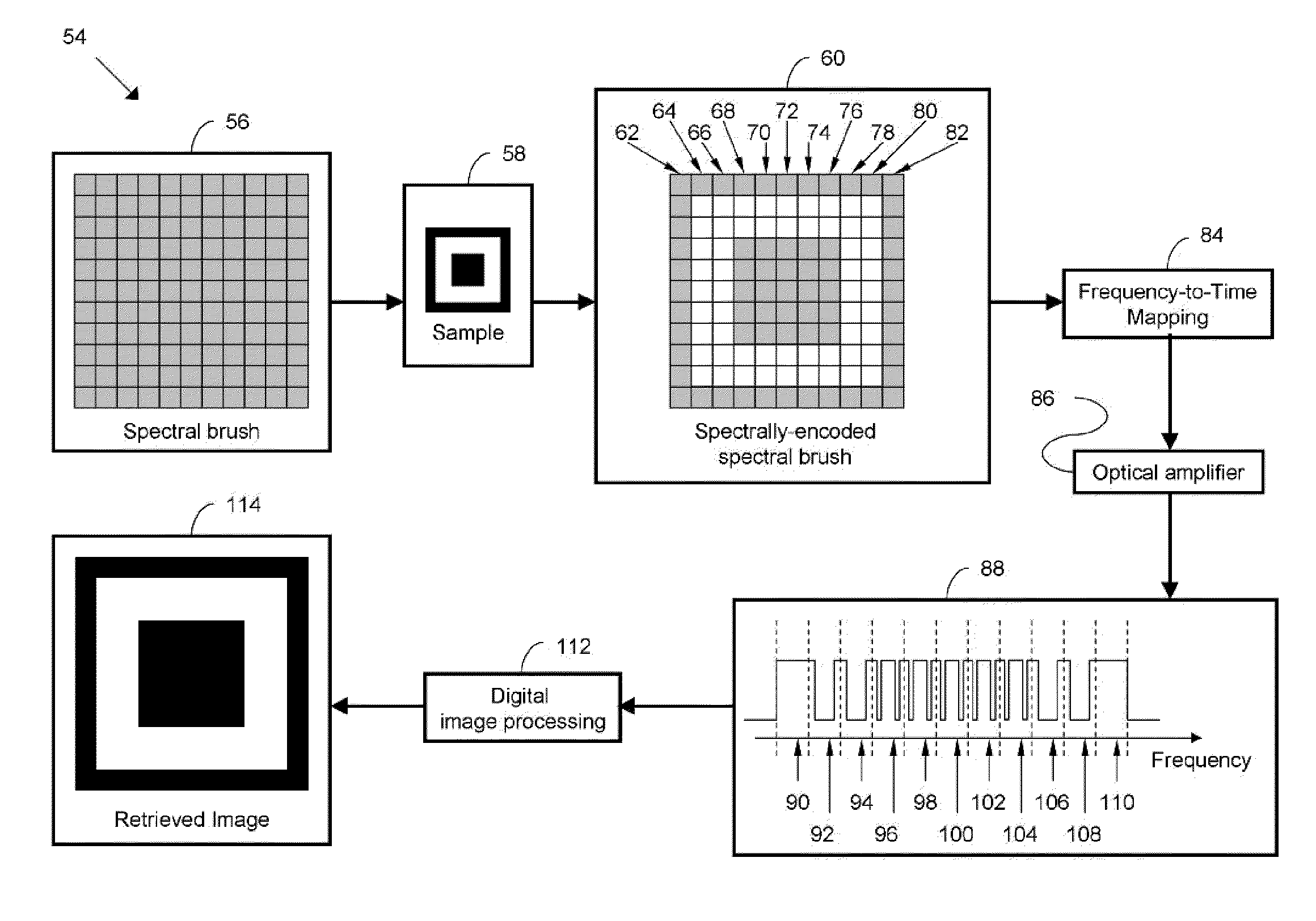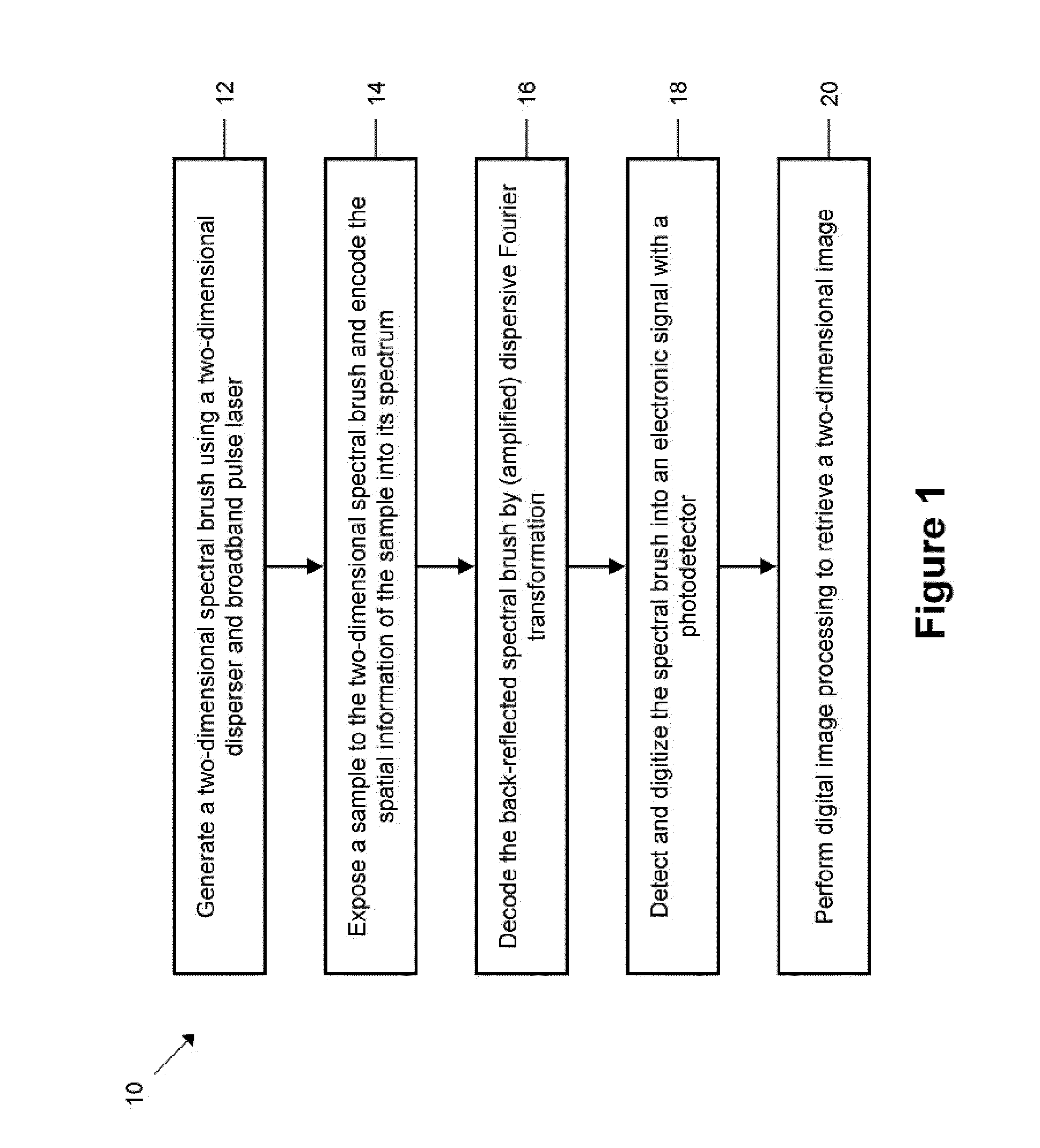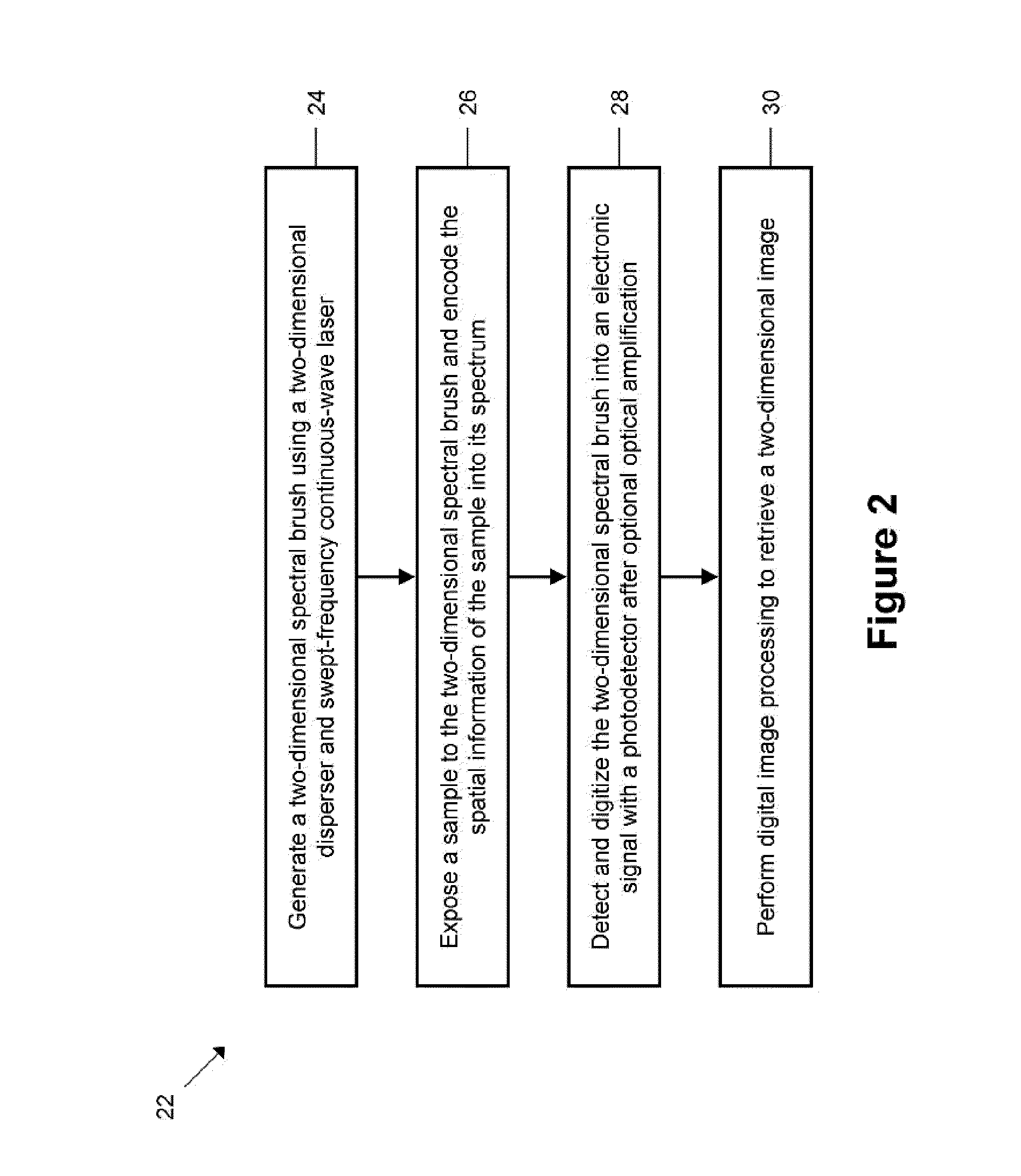Methods for optical amplified imaging using a two-dimensional spectral brush
a spectral brush and amplified imaging technology, applied in the field of optical amplified imaging, can solve the problems of limiting the dynamic range of the system, slow detection techniques for imaging, and difficult calibration of mismatches, etc., to achieve the effect of reducing size, enhancing flexibility, and small size and flexibility of the endoscopic prob
- Summary
- Abstract
- Description
- Claims
- Application Information
AI Technical Summary
Benefits of technology
Problems solved by technology
Method used
Image
Examples
example 1
[0141]In order to demonstrate the functionality of the invention, the embodiment of the apparatus 116 shown schematically in FIG. 6 was constructed and tested using method shown in FIG. 1. The optical source that was used was a broadband pulse laser with a center wavelength and bandwidth of 1587 nm and 15 nm, respectively. The average optical power and pulse repetition rate of the laser was about 20 mW and 36.7 MHz, respectively. By pulse-picking the pulse train, the pulse repetition rate was reduced down to 6.1 MHz which is equivalent to a pulse interval of 163 ns. The spectrum of the laser was broadened by a high nonlinearity fiber to generate large bandwidth.
[0142]The combination of the virtually-imaged phased array (VIPA) with a free spectral range (FSR) of 67 GHz and a linewidth of 550 MHz and the diffraction grating with a groove density of 1200 lines / mm formed two-dimensional spectral brushes which are incident onto the sample. The average optical power of the spectral brush ...
example 2
[0149]A microfluidics experiment to attempt to observe ultrafast motion was conducted with the apparatus. In recent years, microfluidics has revolutionized molecular biology procedures for enzymatic analysis, proteomics, and DNA analysis based on polymerase chain reaction on microfluidic biochips.
[0150]The optical source that was used was a mode-locked femtosecond laser. The center wavelength, bandwidth, pulse energy and pulse-repetition rate of the laser after spectral broadening, filtering and pulse picking were 1,590 nm, 15 nm, 82 pJ and 6.1 MHz, respectively. The 2D spectral pattern was produced by the 2D spatial disperser and focused onto the sample using an objective lens.
[0151]The 2D disperser was a pair of orthogonally oriented dispersers, which consisted of a diffraction grating with a groove density of 1,200 lines per millimeter and a virtually imaged phased array with a free spectral range of 67 GHz and a linewidth of 550 MHz. The amplified dispersive Fourier transformer ...
example 3
[0153]To show the nanosecond time-resolved real-time imaging capability of the invention, the dynamical process of a laser-induced surface change in combination with laser ablation was monitored with the imaging technique and the apparatus illustrated in FIG. 16. Laser ablation is a powerful tool that has been used for many applications including laser surgery, laser cutting, laser engraving, and laser-induced breakdown spectroscopy.
[0154]In this example, a mid-infrared excitation pulse laser (with a pulse energy of 6 mJ and a pulse width of 5 ns) was focused at an angle onto the sample with a bilayer of aluminum and silicon dioxide deposited on top of a silicon-on-insulator substrate, while the two-dimensional spectral brushes are normal and incident onto the surface of the sample. The excitation pulse for the laser ablation was an optical parametric oscillator pumped by a Nd:YAG Q-switched laser. It generates a high power pulse with a center wavelength of 2.8 μm. A lens with a foc...
PUM
 Login to View More
Login to View More Abstract
Description
Claims
Application Information
 Login to View More
Login to View More - R&D
- Intellectual Property
- Life Sciences
- Materials
- Tech Scout
- Unparalleled Data Quality
- Higher Quality Content
- 60% Fewer Hallucinations
Browse by: Latest US Patents, China's latest patents, Technical Efficacy Thesaurus, Application Domain, Technology Topic, Popular Technical Reports.
© 2025 PatSnap. All rights reserved.Legal|Privacy policy|Modern Slavery Act Transparency Statement|Sitemap|About US| Contact US: help@patsnap.com



